French Bulldog Sketch Ideas: 7 Creative Concepts for Artists
Capturing the look of a French Bulldog through sketching brings out both its charm and personality. With its compact body, wrinkled face, and iconic bat-like ears, this breed offers plenty of inspiration for different drawing approaches. This guide explores simple ways to sketch French Bulldogs in various art styles, from lifelike portraits to playful cartoon versions.
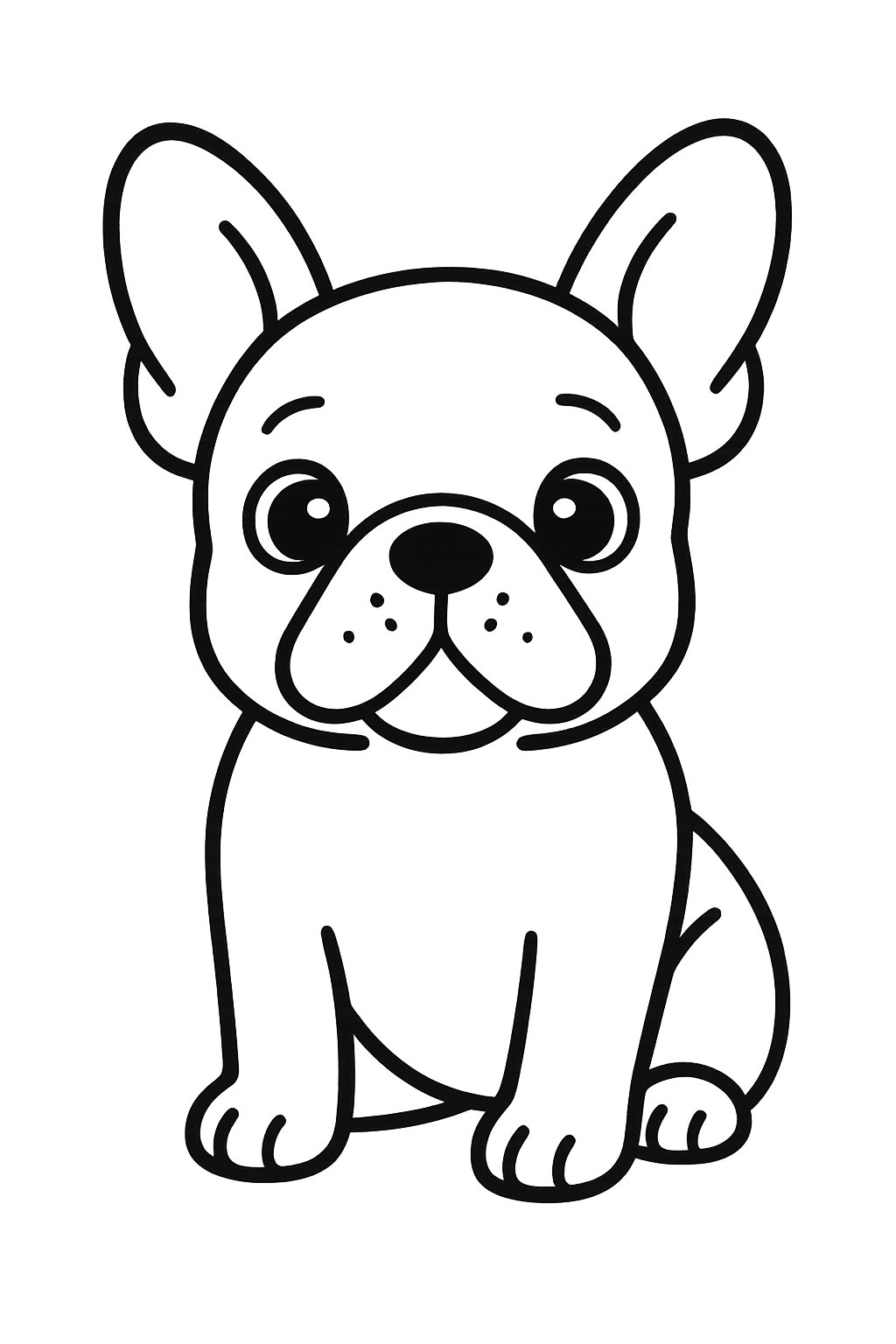
Each section focuses on a different aspect of sketching—from practicing head angles and full-body poses to adding expressive facial details and subtle shading. Whether someone prefers a clean outline or a detailed study, these ideas help build confidence and skill in bringing this distinctive dog to life on paper.
1) Realistic French Bulldog Portrait Sketch
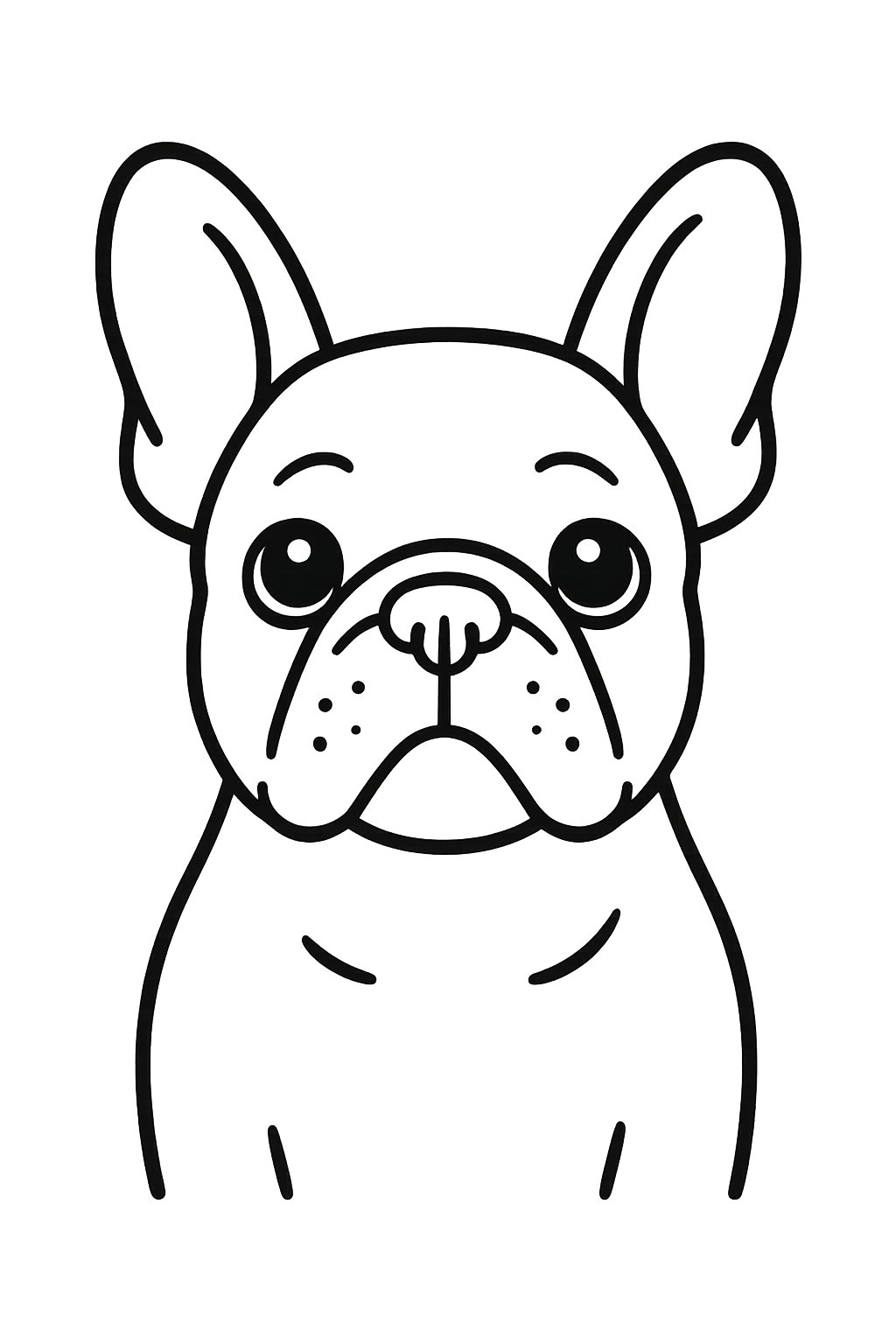
A realistic French Bulldog portrait sketch focuses on capturing the dog’s unique face and compact shape. Artists often start with light pencil lines to outline the head, ears, and muzzle.
They pay close attention to the wrinkles around the nose and forehead, which define the breed’s expression. Small details like the eyes and short fur texture make the sketch feel lifelike.
Using shading adds depth and contrast. Many artists study reference photos to understand lighting, proportions, and anatomy before refining the final drawing.
2) Cartoon Style French Bulldog Drawing
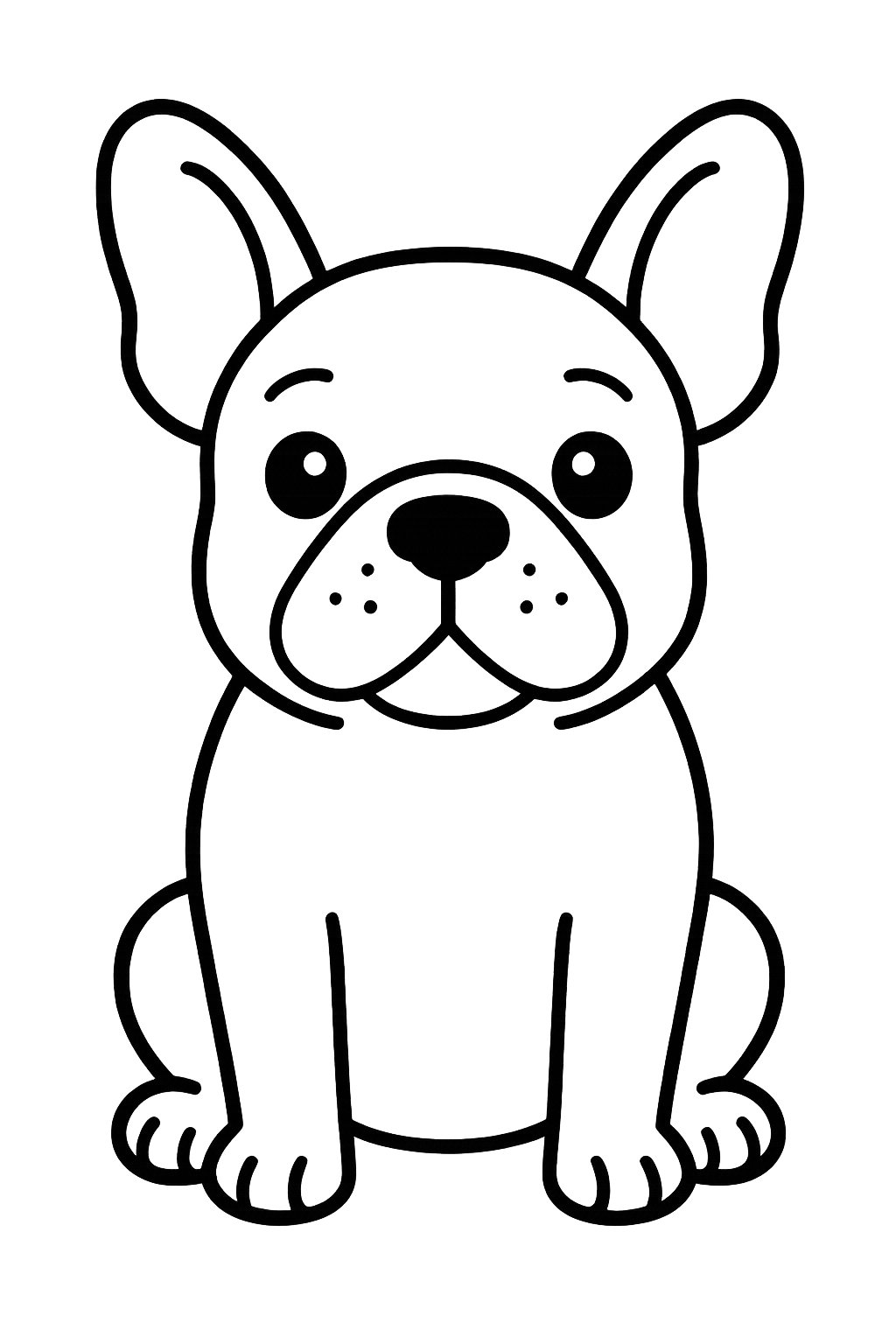
Cartoon versions of French Bulldogs often highlight their round eyes, short snouts, and upright ears. Artists use smooth lines and simple shapes to capture their playful look.
They may exaggerate features slightly to make the dog appear cuter or more expressive. A small head tilt or wide grin adds personality without losing the breed’s charm.
Using light shading and soft colors can enhance the design. This style suits both beginners and those experimenting with fun, approachable dog illustrations.
3) Minimalist French Bulldog Outline
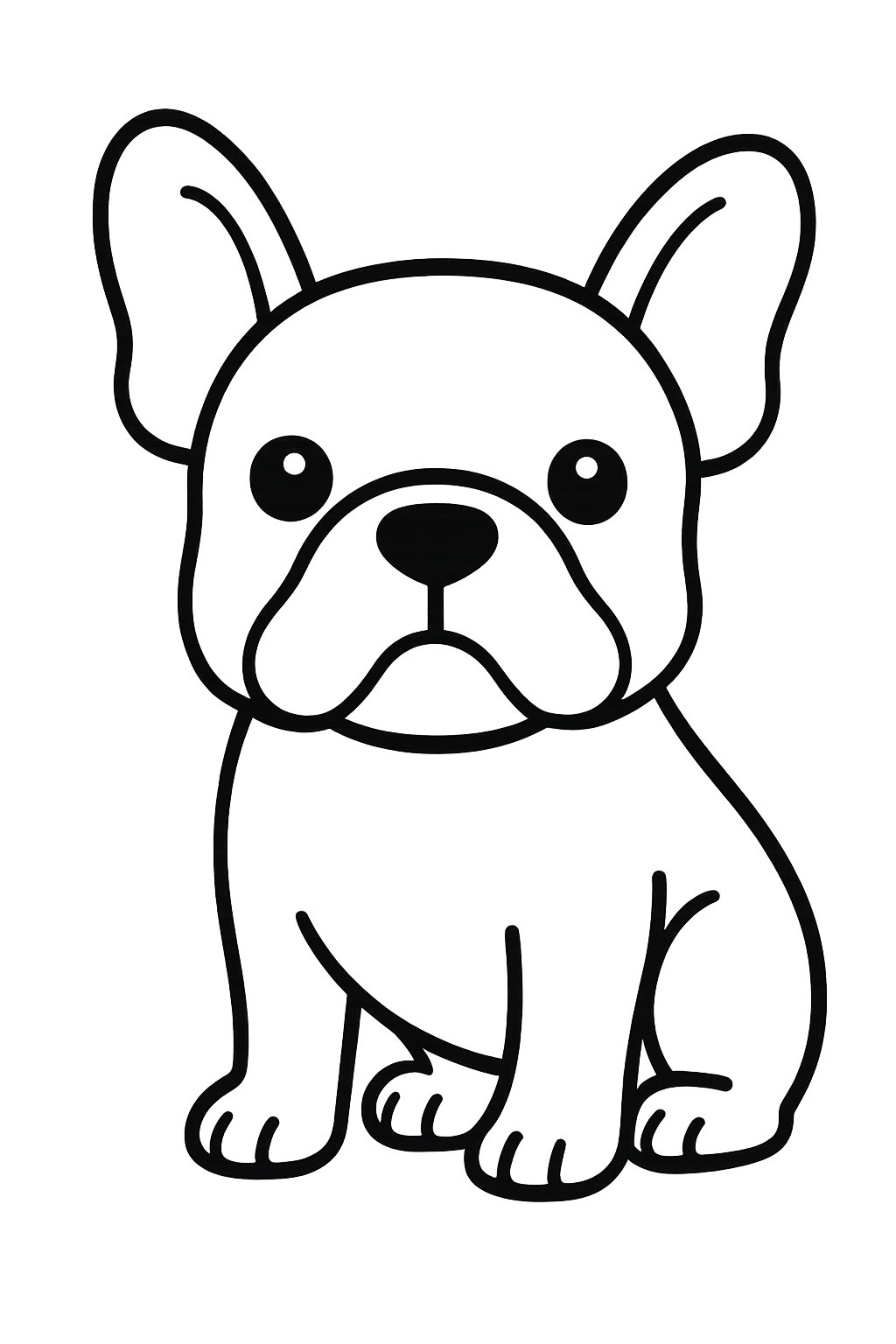
A minimalist French Bulldog outline highlights the dog’s distinct head shape, upright ears, and compact body using simple lines. It focuses on clear structure instead of color or texture.
This clean style fits well with modern art and graphic design. Artists often use smooth curves and balanced spacing to keep the look neat and recognizable.
Such outlines work well for tattoos, decor, or digital projects. Even without shading, the form clearly shows the French Bulldog’s playful yet sturdy character.
4) French Bulldog Head Angle Studies
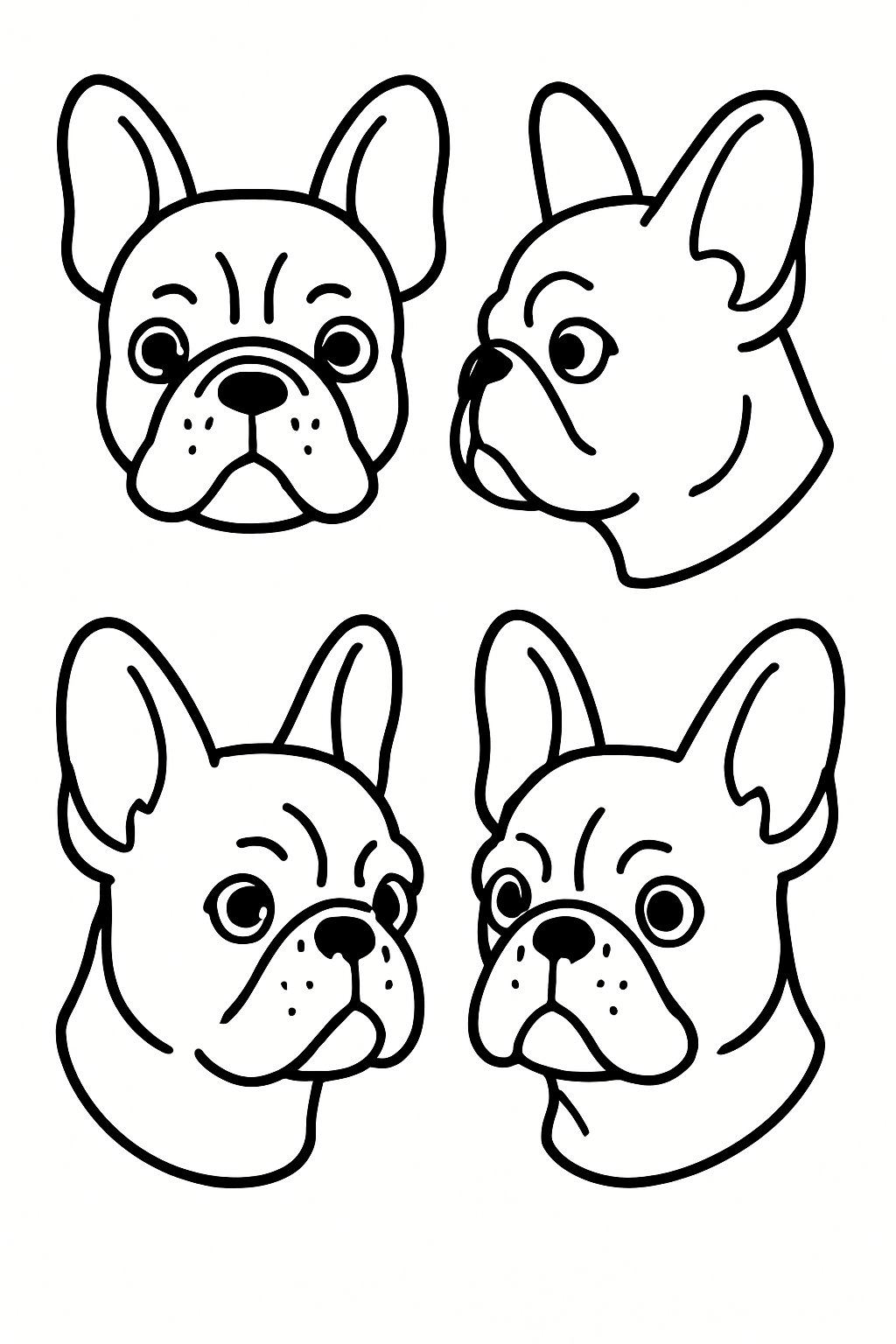
Studying the head from different angles helps artists understand the breed’s structure. The French Bulldog’s broad skull, short muzzle, and large ears require careful observation.
Artists often sketch the head in front, side, and three-quarter views to capture its proportions accurately. These angles show how the wrinkles and folds shift with light and perspective.
Practicing with varied angles allows for better realism and consistency. It also helps highlight each dog’s personality through subtle changes in eye shape, ear tilt, and mouth position.
5) Expressive French Bulldog Face Sketches
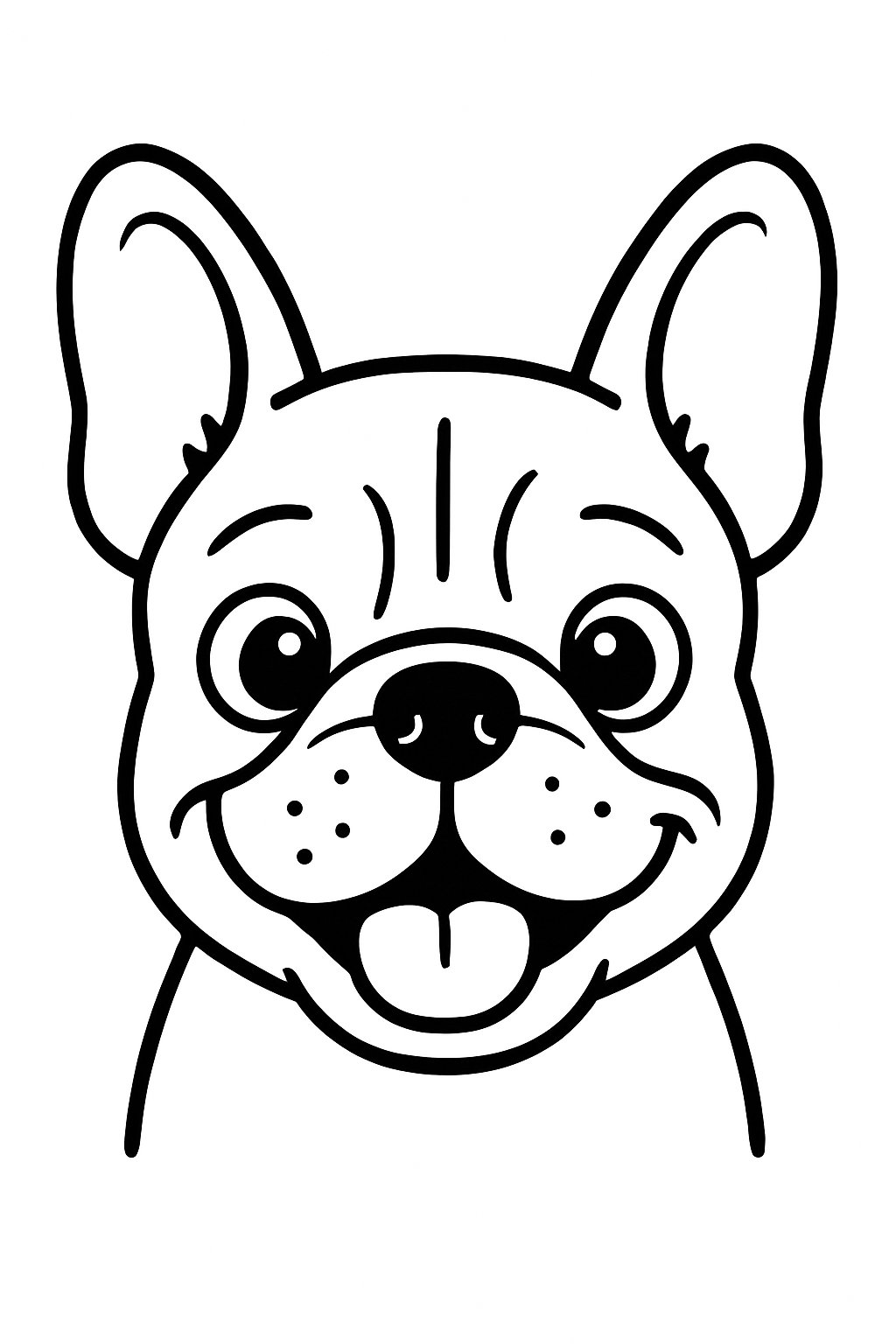
Artists can capture a French Bulldog’s character by studying its key features—large round eyes, a short muzzle, and wrinkled skin. These traits make the face expressive and full of personality.
Starting with soft pencil lines helps set the basic structure before refining details. Light shading around the eyes and forehead brings out emotion without heavy contrast.
Sketchers may observe the tilt of the head or the droop of the ears to show curiosity or playfulness. Even small changes in line direction or pressure can shift the entire mood of the drawing.
6) Full Body French Bulldog Illustrations
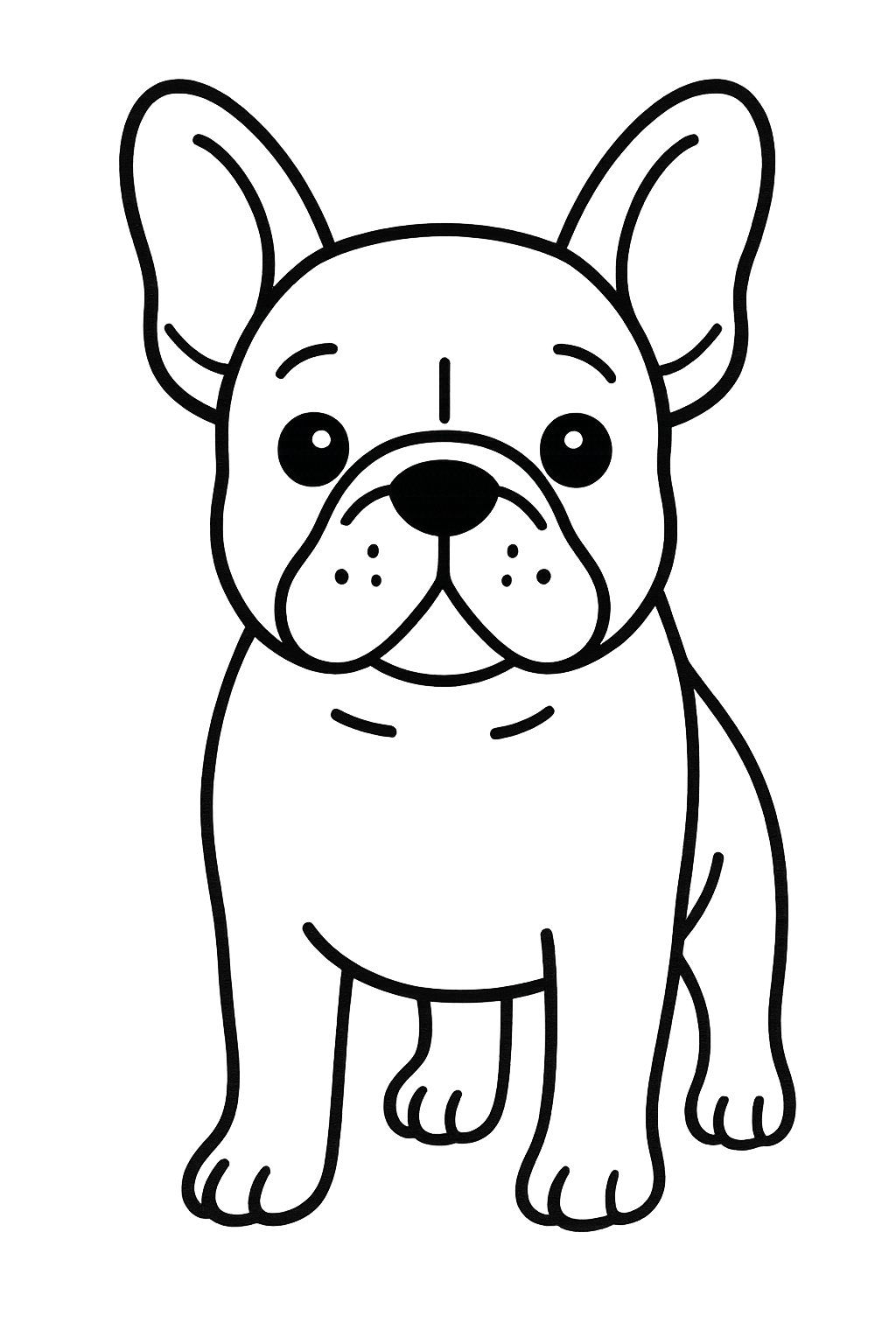
Full body illustrations help artists study the French Bulldog’s compact frame and balanced stance. They offer a chance to focus on proportions, posture, and how the short legs support the sturdy body.
Artists often start with basic shapes, outlining the head, chest, and hips before adding details like folds and fur texture. This method helps maintain correct structure and balance.
Different drawing styles—realistic, cartoon, or simplified—can highlight the breed’s personality. Paying attention to subtle features such as the short muzzle and bat-like ears makes each sketch look unmistakably like a French Bulldog.
7) French Bulldog with Wrinkled Face Details

Artists often focus on the French Bulldog’s wrinkled face to capture its charm and realism. The folds around the nose, eyes, and forehead give the breed its signature look. Careful shading makes these wrinkles appear three-dimensional.
They can begin by lightly sketching the main facial shapes, keeping space for each wrinkle. Observing real photos helps with accurate placement. Short, deliberate pencil strokes can show the soft skin texture.
Adding small details like jowls and subtle shadows around the muzzle completes the effect, giving the drawing a lifelike expression.
Sketching Techniques for French Bulldog Art
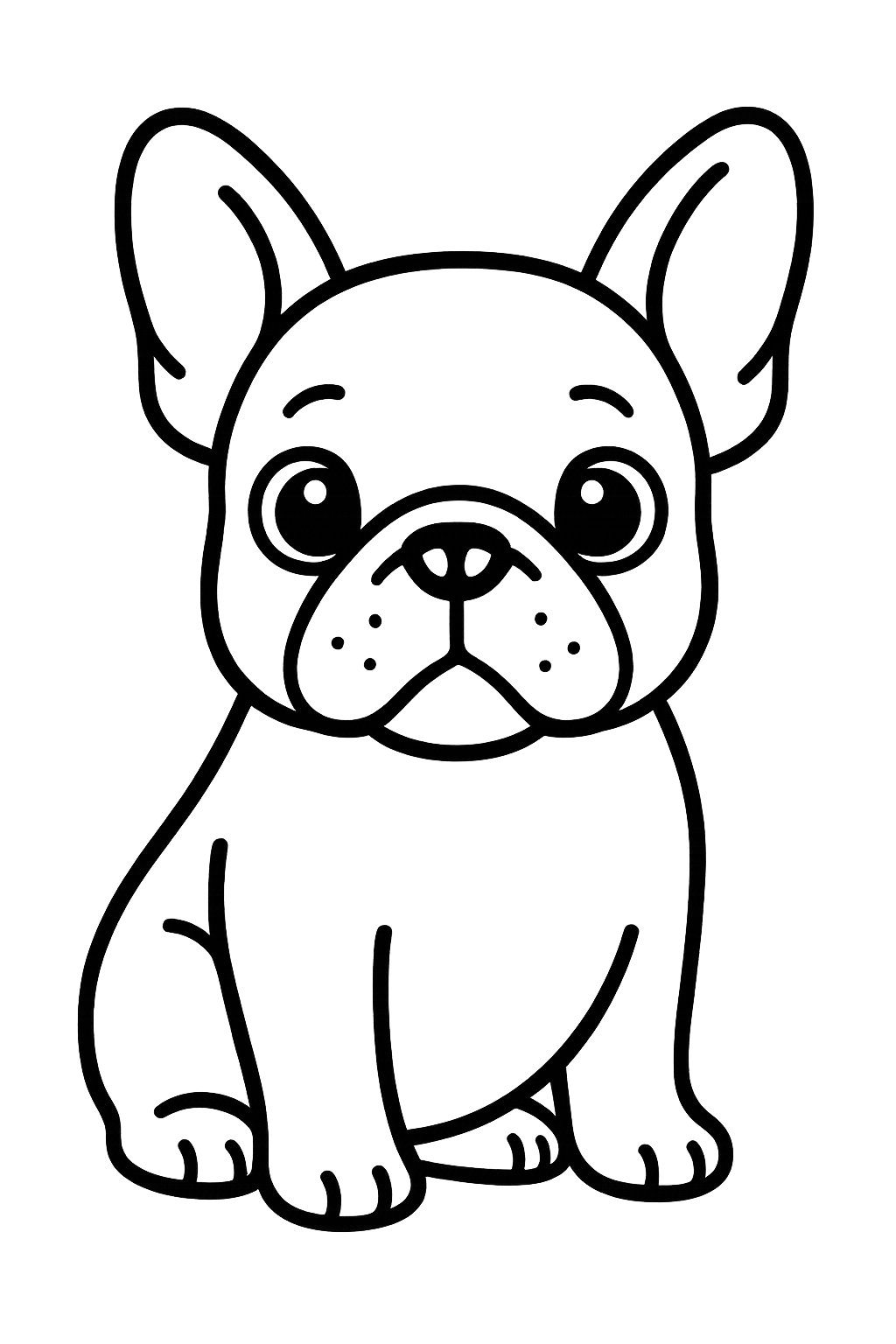
Drawing a French Bulldog requires attention to structure, proportion, and personality. Artists should focus on selecting suitable tools, understanding the dog’s anatomy, and capturing expressive details that make these dogs unique.
Choosing the Right Drawing Tools
The right tools help control texture, tone, and detail. Graphite pencils (2H–6B) work best for building light outlines and soft shading. Mechanical pencils are ideal for precision, while traditional wooden pencils allow greater variation in line weight.
Colored pencils or fine-line pens can enhance definition around the ears, wrinkles, and muzzle. Artists often use smooth Bristol paper or sketch pads with medium tooth to balance shading and line clarity.
Keeping tools organized matters. A small table like this can help track materials:
| Tool Type | Best For | Notes |
|---|---|---|
| Graphite pencils | Outlines, shading | Range from light to dark tones |
| Erasers | Correcting, highlighting | Kneaded erasers lift graphite |
| Blending stumps | Soft shadows | Avoid over-blending wrinkles |
Basic Shapes and Anatomy of French Bulldogs
Every drawing starts with shapes that define proportion. The French Bulldog’s head forms a rounded square, the body a compact oval, and the ears tall and slightly curved at the top. Outlining these shapes before adding detail prevents distortion and keeps symmetry.
Pay close attention to the short muzzle, flat nose, and large round eyes. Their sturdy frame should appear balanced but not bulky. Light guidelines help maintain the correct angle of the head and ensure the body connects naturally to the neck and shoulders.
Understanding bone structure improves accuracy. Their legs are short and strong, positioned slightly apart to show stability. Observing reference photos helps capture the correct orientation of the skull and limbs.
Adding Personality and Expression
A French Bulldog’s character shows in its eyes, posture, and wrinkles. Small shifts in eyebrow lines or ear tilt can show curiosity, playfulness, or calmness. Artists can use light shading under the eyes and around the mouth to emphasize emotion.
To avoid stiffness, sketch with loose strokes first. Then refine the features that best define the dog’s attitude. Focus on wrinkles around the nose and forehead, as they create depth and convey mood.
Contrast builds liveliness. Slight variations in light and dark values make the eyes gleam and the ears pop forward. Taking time with these small adjustments helps the sketch look natural and expressive.
Color and Shading Tips

Accurate shading helps define a French Bulldog’s wrinkles, muscles, and short coat. Careful color choices bring out the breed’s unique features like the bat-like ears, round eyes, and short muzzle. Balanced highlights and shadows make the drawing appear more realistic and three-dimensional.
Working With Pencil and Charcoal
Pencil and charcoal give strong control over tone and texture. Artists often start with light outlines to shape the head, ears, and body before darkening lines. Using a soft graphite pencil (2B–6B) helps create smooth gradients, while a kneaded eraser lifts highlights gently from the muzzle or forehead.
Light hatching or cross-hatching can define wrinkles. In contrast, smudging creates soft shadows around the eyes and jowls. When using charcoal, short strokes mimic the short, dense coat of a French Bulldog. Layering from light to dark prevents harsh transitions and keeps details crisp.
A quick reference for pencil work:
| Technique | Effect | Recommended Tool |
|---|---|---|
| Light shading | Soft skin folds | HB or 2B pencil |
| Deep shadows | Strong contrast | 4B–6B pencil |
| Texture and tone | Fur and wrinkles | Blending stump or charcoal |
Keeping the paper clean by resting a scrap sheet under the drawing hand helps maintain sharp contrast between light and dark areas.
Incorporating Colored Pencils and Watercolors
Colored pencils add warmth and depth to a sketch. Artists should layer neutral tones like beige, gray, and tan to match the French Bulldog’s coat. Short, directional strokes follow the hair growth to keep the texture natural. Light pressure works best for smooth areas, while heavier pressure deepens shadows under the chin and around the eyes.
Watercolors can enhance pencil sketches when used sparingly. A light wash of mixed gray and brown provides base color without obscuring pencil lines. Letting each layer dry before adding detail prevents muddy tones.
To blend colors evenly, artists can:
- Use colorless blenders for soft transitions.
- Combine cool grays for shadows and warm browns for highlights.
- Keep white space for reflected light on the eyes and nose.
This layered approach keeps the French Bulldog’s features clear and natural while adding subtle life to the drawing.
Frequently Asked Questions
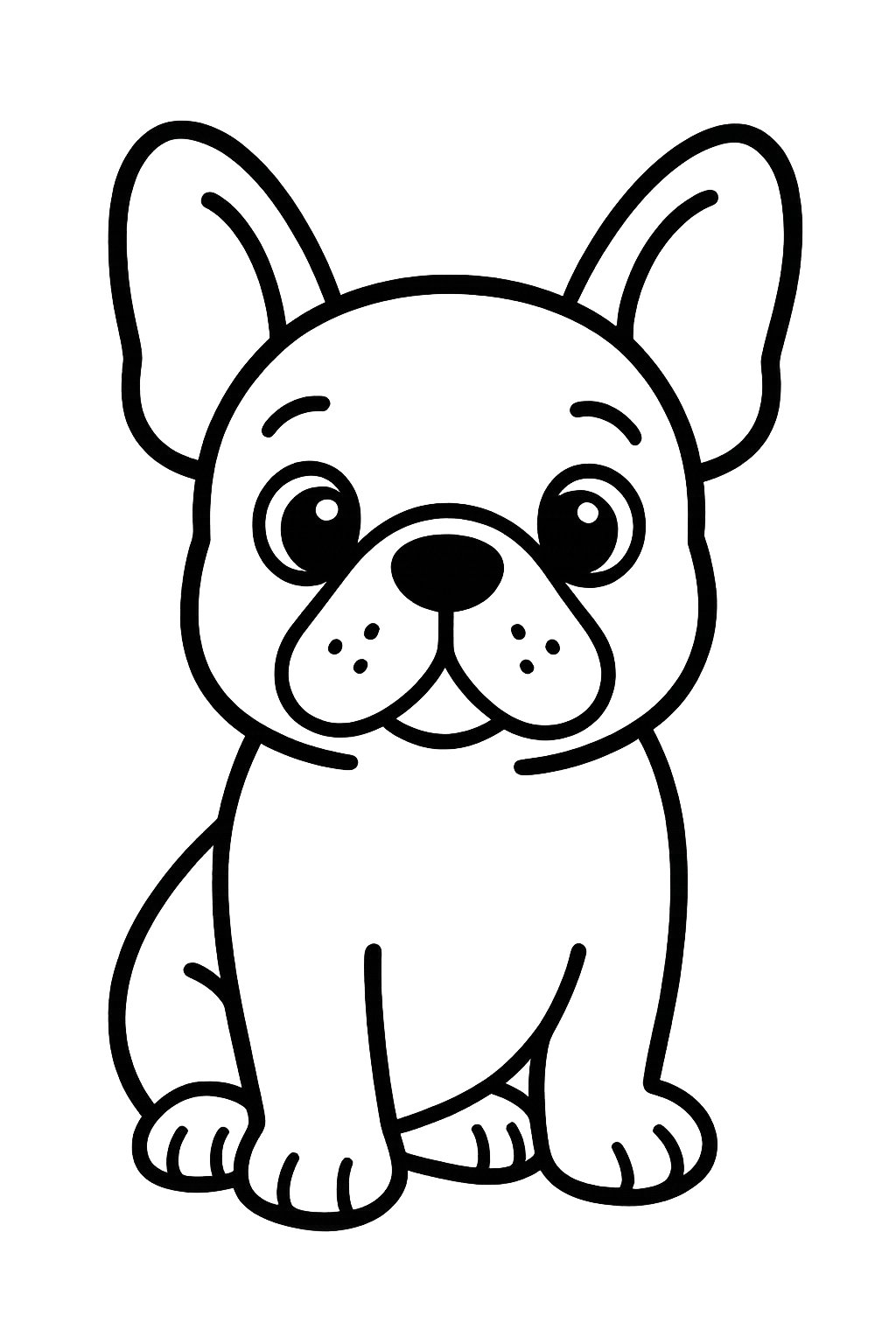
French Bulldog sketches often focus on shape, proportion, and expression. Artists use clean outlines, study the breed’s unique features, and adjust style depending on whether the goal is realism, simplicity, or playfulness.
What are some simple techniques for sketching a French Bulldog for beginners?
Beginners can start with basic shapes—a circle for the head, an oval for the body, and small cylinders for the legs. Using light pencil strokes helps in adjusting the sketch easily.
They should also focus on symmetry and the dog’s compact form. Keeping lines clear and details minimal builds confidence before adding texture or shading.
How can I make a French Bulldog drawing appealing for children?
To make a drawing engaging for children, artists can try a cartoon style with round features and large eyes. Smooth, curved lines and bright colors add a friendly look.
Simplifying wrinkles and reducing small details helps keep the character fun and easy to recognize.
What are some tips for sketching a realistic French Bulldog?
A realistic drawing relies on observation and detail. Artists can study photos to capture correct proportions, especially the short muzzle and broad chest.
Shading enhances depth, while attention to light and shadow around the wrinkles and ears adds realism. Using reference images improves accuracy.
Can you suggest ways to convey cuteness in a French Bulldog sketch?
Cuteness often comes from soft features and expressive eyes. Slightly enlarging the eyes or making the head proportionally larger than the body helps.
Gentle curves, small noses, and relaxed poses create an approachable impression without exaggeration.
How do I draw a French Bulldog’s face with easy-to-follow steps?
Start by sketching a rounded head shape. Add guidelines for eye and nose placement. Then draw bat-like ears upright on top.
Outline the eyes, nose, and mouth before adding light shading around the cheeks and forehead. Refining these features gives structure and personality.
What are essential features to capture when drawing the face of a French Bulldog?
The key features include the short, flat muzzle, folded wrinkles, and upright ears. Including these elements keeps the drawing recognizable.
Highlighting the deep-set eyes and gentle creases around the nose helps show the breed’s distinct expression. Accurate placement of these features creates a balanced and natural look.
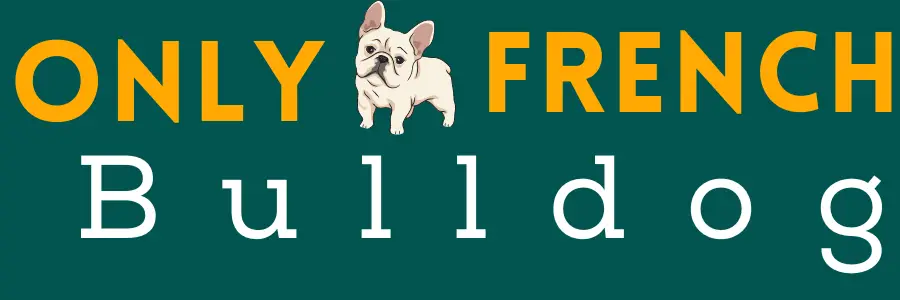



![Are French Bulldogs Good Dogs [Discovered]](https://onlyfrenchbulldog.com/wp-content/uploads/2024/06/are-french-bulldogs-good-dogs-discovered_3201-768x550.jpg)
![How To Clean French Bulldog Ears [Unraveled]](https://onlyfrenchbulldog.com/wp-content/uploads/2024/06/how-to-clean-french-bulldog-ears-unraveled_3193-768x550.jpg)
![What To Give A Frenchie With Diarrhea [Elaborated]](https://onlyfrenchbulldog.com/wp-content/uploads/2024/06/what-to-give-a-frenchie-with-diarrhea-elaborated_3135-768x550.jpg)